At the end of October 2019, I had the opportunity to visit Quanta on a visit to Taipei, Taiwan. Many of our readers may not know Quanta, or its QCT arm, but Quanta is an enormous OEM/ ODM. They have been active in the hyper-scale infrastructure market on the data center side with many large customers. They also make other systems. A good example is that I heard a casual statistic mentioned while walking around the facility “Quanta makes 1 in 4 of all notebooks worldwide.” I did not get to follow-up on that, but this is a big business.
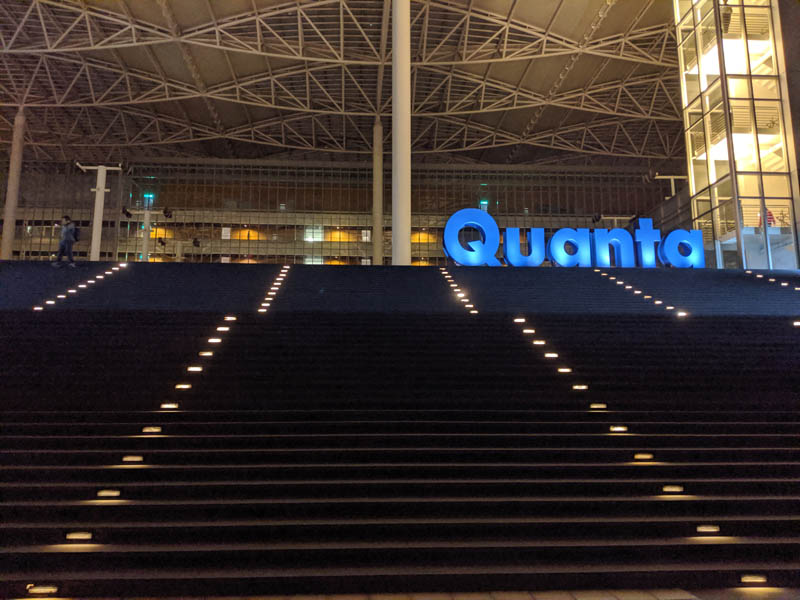
During my visit, I got to see a number of products that Quanta has on the market, and a few coming to market soon. I wanted to highlight a few of those in this article. I also was able to tour one of the data center integration labs that the company has on-site.

Quanta Goes AMD EPYC “Rome” in a Big Way
We spent a lot of time looking at what may be the biggest product line for Quanta in 2019 in terms of significance. Quanta sounds like they may have had an OEM/ ODM engagement for the AMD EPYC 7001 series, but they were not offering the systems in the open market. That changed with the AMD EPYC 7002 series codenamed Rome. Something that stood out in the discussion was that the company was highlighting clear performance leadership with AMD.
Quanta has various models, but they are centered around a dual-socket, and a single socket motherboard. These motherboards are paired with 1U or 2U chassis that can be customized for features such as 2.5” NVMe or 3.5” SATA drives.
We received the late OK to disclose an exciting model we saw in our visit, the QuantaPlex S43CA-2U. This is a 2U 4-node platform that is quite unlike any other 2U4N EPYC systems we have seen thus far. As such, we are going to lead with that platform.
QuantaPlex S43CA-2U 2U 4-Node 1P Monster
At STH, we have reviewed quite a few AMD EPYC 2U 4-node offerings. These include the Gigabyte H261-Z60, H261-Z61, and H262-Z62, the Cisco UCS C4200, and we have a Supermicro BigTwin EPYC edition in the lab along with covering the Supermicro 2U4N 1P AMD EPYC 7002 platform. The Quanta/ QCT QuantaPlex S43CA-2U is something different, and extremely exciting. This is a single socket 2U4N platform. As a result, one can leverage discounted CPU SKUs while still getting maximum PCIe Gen4 lanes in a platform. Other vendors have the same CPU density in upcoming platforms we have seen, but Quanta has a few special items.

Quanta is taking a different approach with the power supplies. Instead of locating them in the rear of the chassis along with sleds for each node, Quanta is putting them on the opposite side of the chassis. That means the sleds can be wider. As a result, Quanta is able to fit 16 DIMMs per node, twice of what many competitive offerings do or will offer.
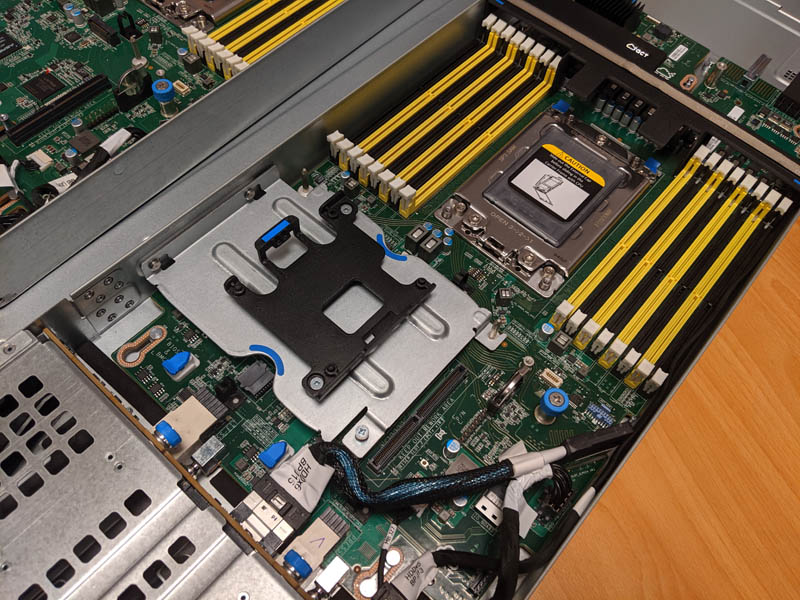
The other neat feature that the QuantaPlex S43CA-2U offers is aggregated networking. Each node has a daughtercard for networking. This is then aggregated to minimize upstream cabling. We asked, and these are individual NICs, not multi-host adapters being used. Each NIC has 2x25GbE and those 25GbE links exit the chassis aggregated into two QFSP28 connectors in the I/O pass-through module. The I/O pass-through module also has its own ASPEED AST2520 for chassis management.
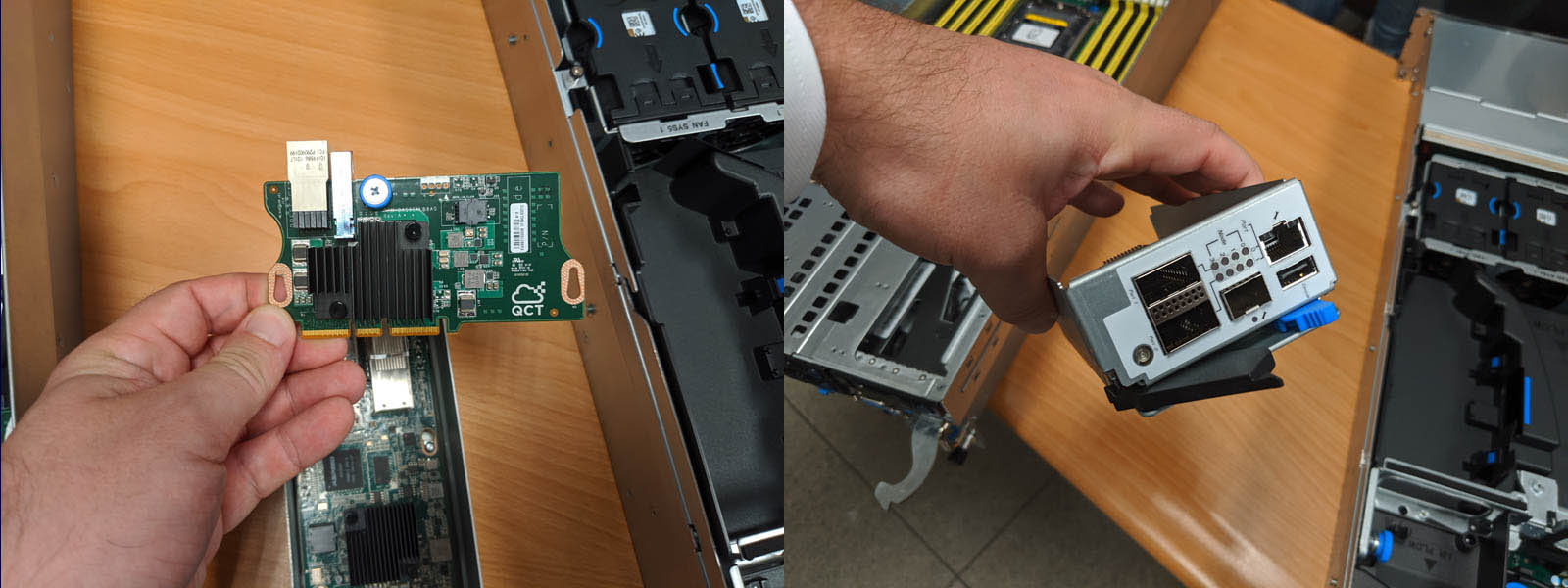
For expansion and storage, Quanta offers a number of offerings including low profile and full-height PCIe Gen4 slots for AI inferencing GPUs like the NVIDIA Tesla T4 and future cards.
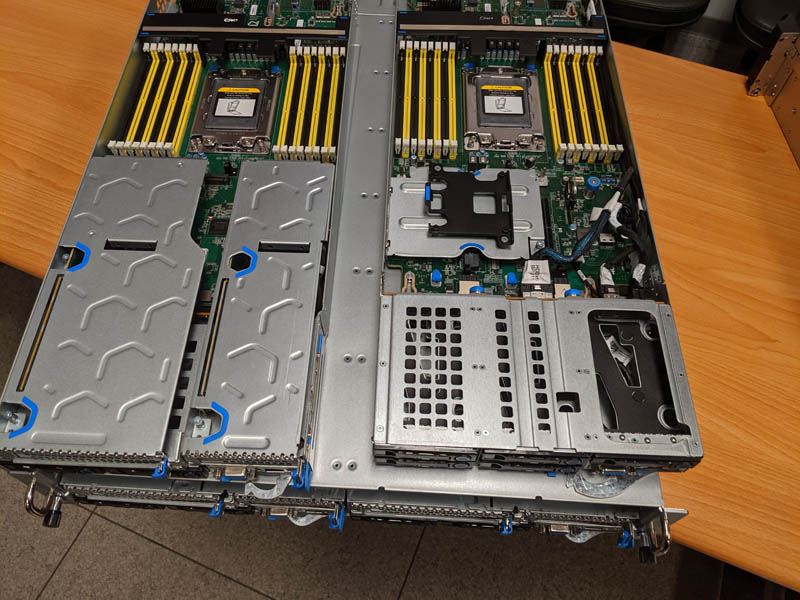
Here is an example with the storage node which has 5x 2.5″ bays. The base motherboard has two M.2 PCIe/ SATA SSD slots which you can see in the diagram. You can also see a mounting point for a Super Cap if you need one for RAID.
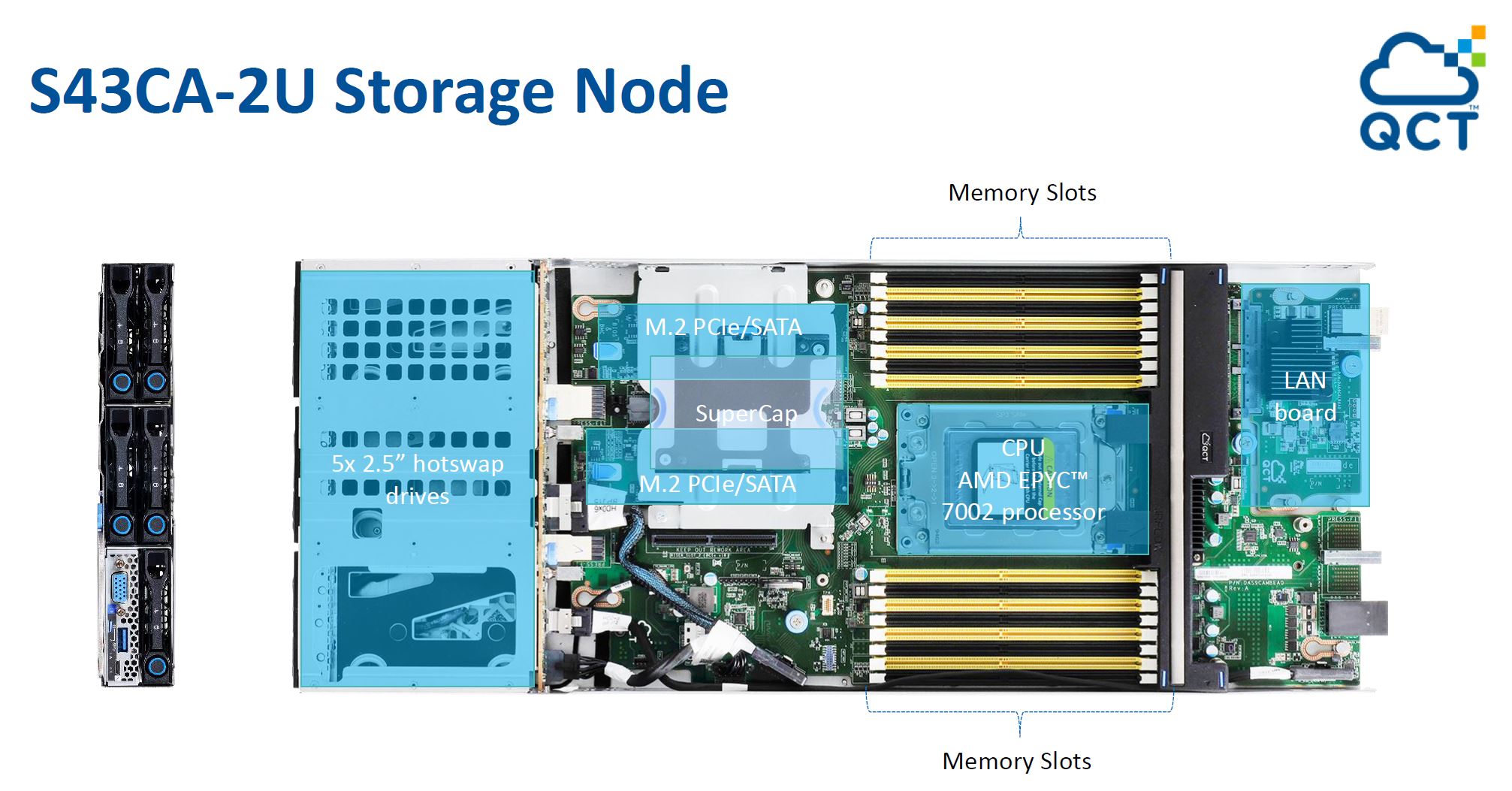
We were also told that one can fit up to 225W TDP and 240W cTDP parts in this design which means it covers the entire, current, AMD EPYC 7002 series SKU stack.
Overall, the is highly impressive in terms of the specs it offers. Getting some hands-on time showed that Quanta has a great platform on its hands.
QuantaGrid S43KL-1U 1U AMD EPYC Platform
The QuantaGrid S43KL-1U platform is a single-socket 1U AMD EPYC platform. Looking at the front of the chassis something sticks out immediately. Quanta’s design allows for up to 12x 2.5″ NVMe SSDs at the front of the chassis. Many competitive systems only allow for 10x 2.5″ SSDs.

These 12x drive bays are cabled and Quanta has a nice backplane option for the 1U solution that allows for storage flexibility. There is also an array of redundant fans cooling the system. The slot next to the cables is actually a SAS RAID controller/ HBA slot if one wants to use legacy storage and does not want to utilize rear PCIe expansion.
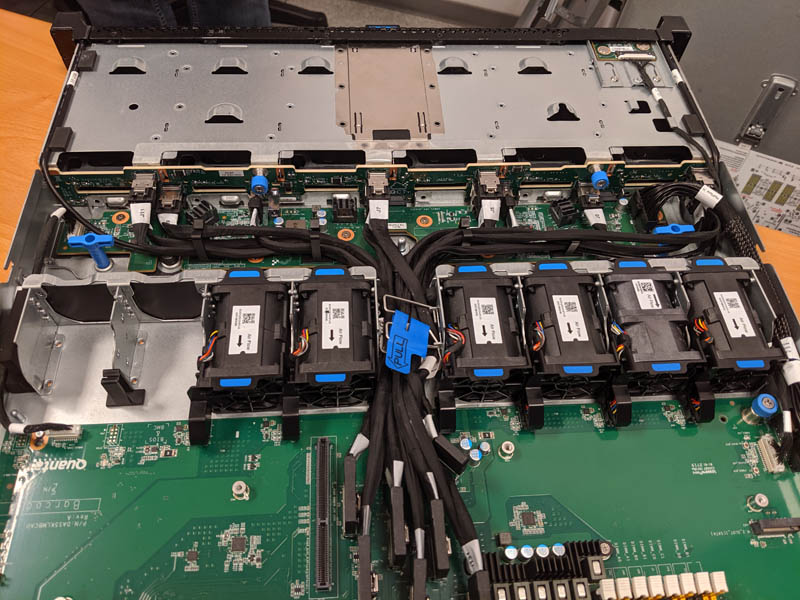
This view we found notable. QCT has a full array of 16x DDR4 DIMMs. One of the unique features we see here is that one set of 8x DIMMs is actually slightly offset from the socket. Quanta can make that work while many vendors would have instead cut to a lower DIMM count design.
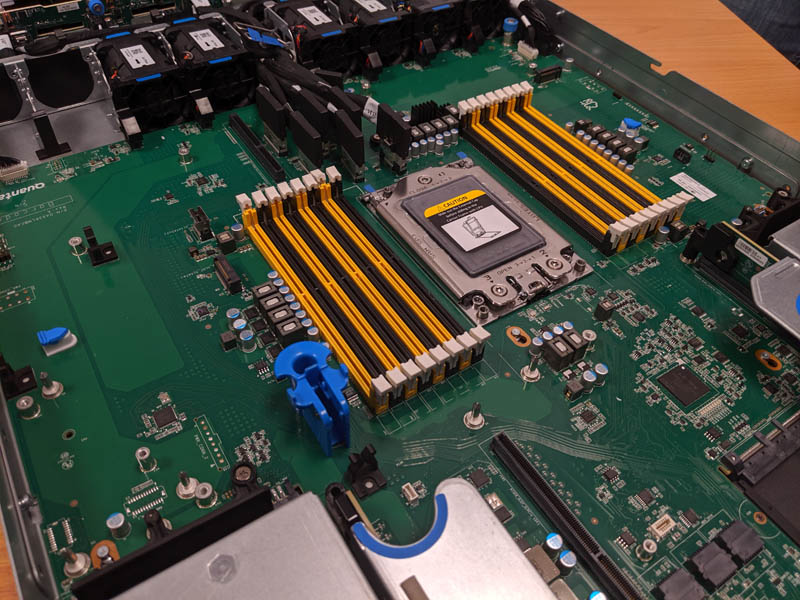
Expansion is very impressive. One can fit two full-height cards or up to three low profile cards depending on the riser configuration. There is a PCIe Gen4 OCP 3.0 NIC slot for 100GbE networking.
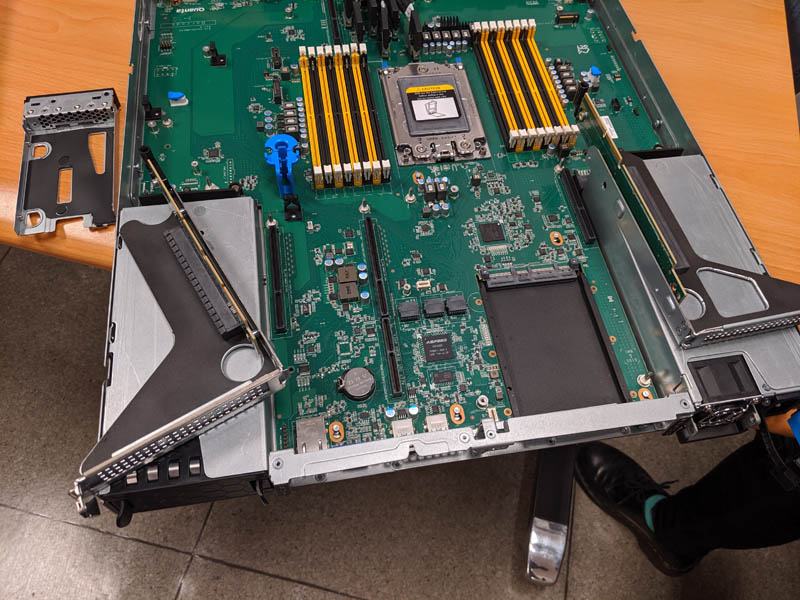
Naturally, there are redundant power supplies as well as two M.2 SSD slots onboard. Here is the company’s overview of the product:
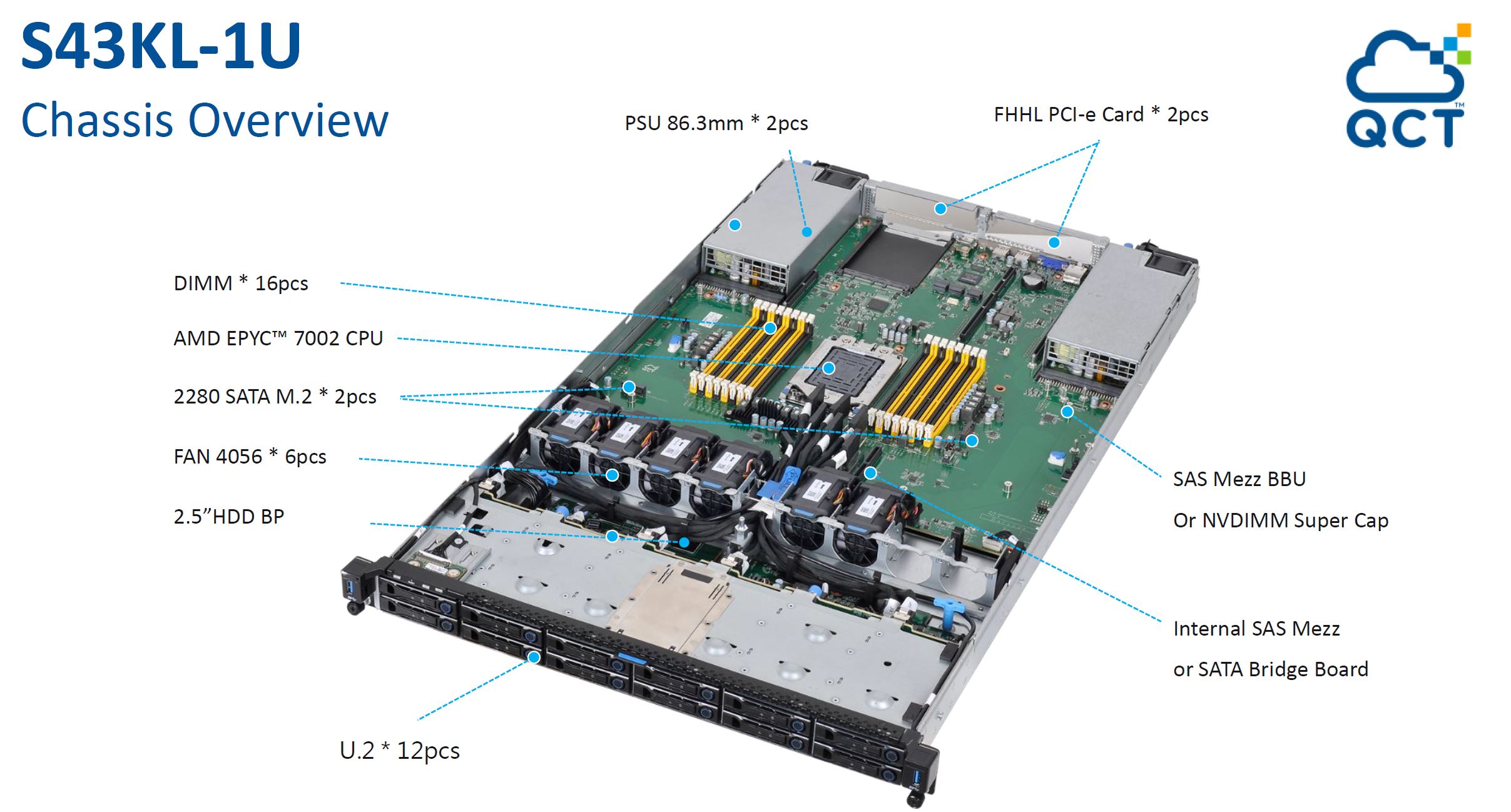
If you were in the market for a HPE ProLiant DL325 Gen10 that we reviewed, the Quanta S43KL-1U is a more modern design with PCIe Gen4 and more expansion capabilities. There are a lot of market segments a product like this can fill.
QCT QuantaGrid D43K-1U 1U and D43KQ-2U Dual AMD EPYC Platforms
The QuantaGrid D43K-1U 1U and D43KQ-2U share a common motherboard design. This is very similar to how other OEMs have designed their 1U and 2U AMD EPYC platforms and it makes a lot of sense.
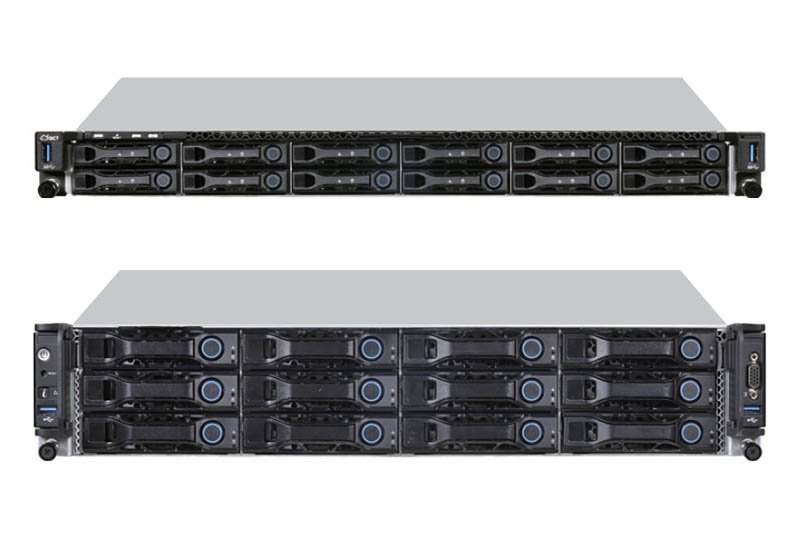
Looking inside the 1U QuantaGrid D43K-1U one can see the dual AMD EPYC sockets, each with 16x DDR4 DIMMs.
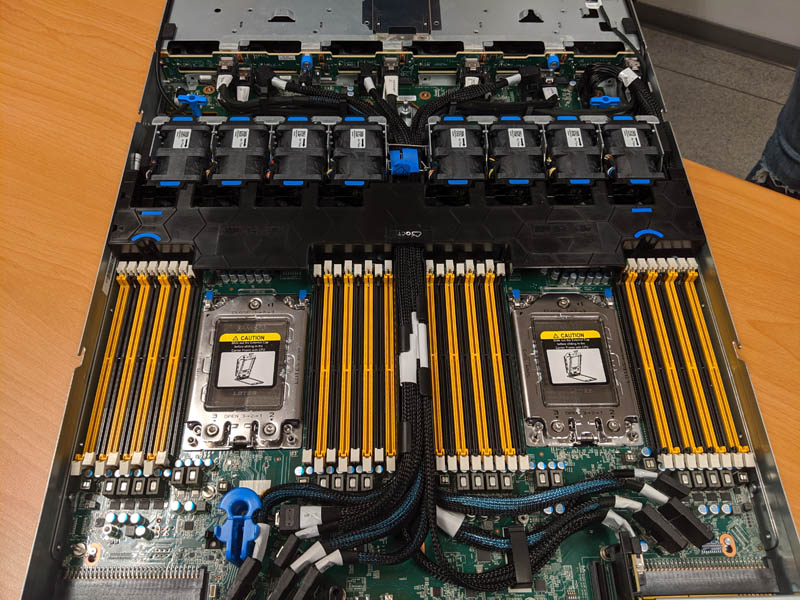
The rear of the chassis, one can see three low profile card slots and dual power supplies. One will notice that Quanta is essentially keeping the I/O features similar, including the OCP NIC and M.2 slots, with the single socket QuantaGrid S43KL-1U.
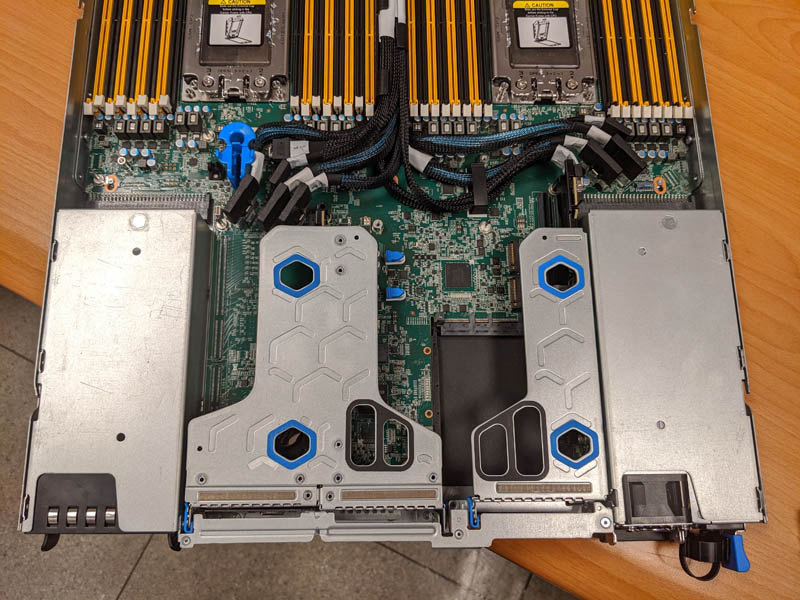
The similarity of features extends to 12x front NVMe bays and the same backplane configuration we saw on the single socket part. Keeping this consistent design language means that a customer can simply choose between single and dual-socket offerings and maintain a consistent feature set.
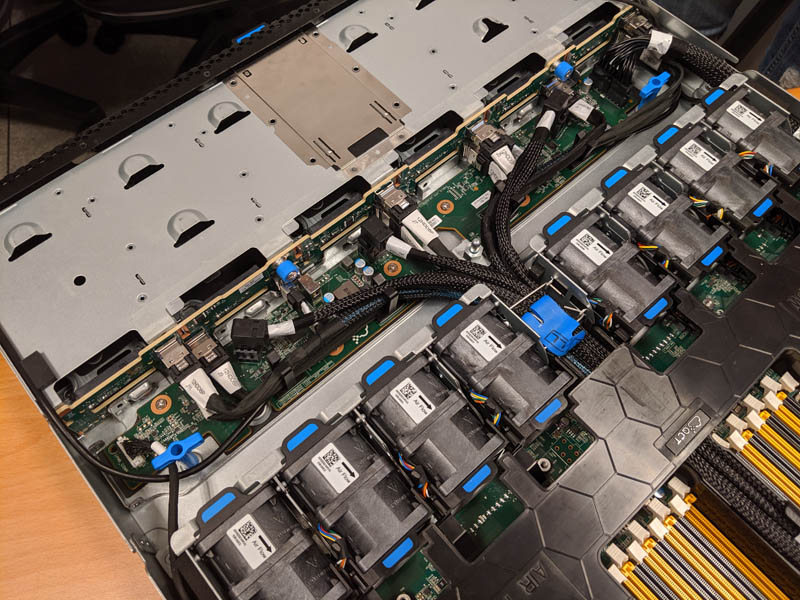
The same motherboard is used with a 2U chassis. Here we are taking apart the QCT QuantaGrid D43KQ-2U system. You can see the nice airflow guide that ducts air to the CPUs as well as the various expansion card options.
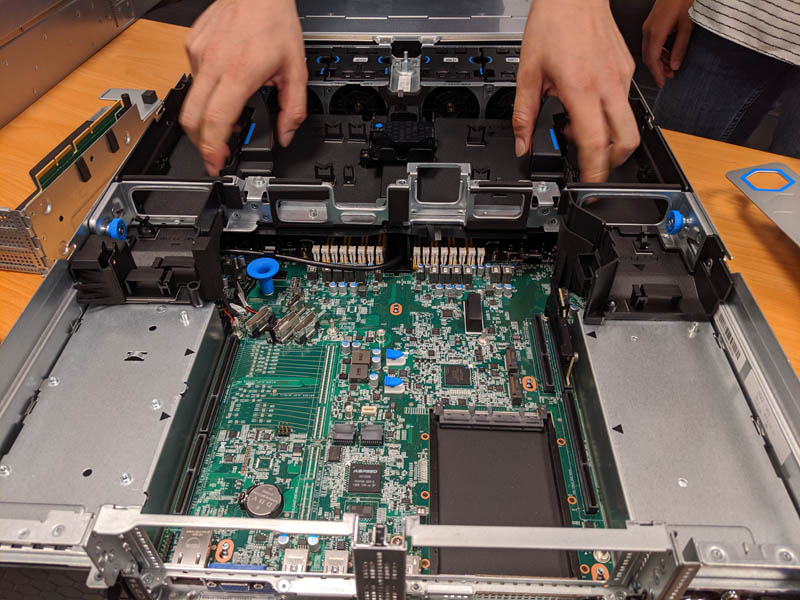
With this configuration, one gains more room for risers, and even rear storage options. This is in addition to features such as the OCP 3.0 PCIe Gen4 x8 NIC slot and M.2 slots.
Overall, the QCT design here is above what we are seeing in first-generation offerings such as the Dell EMC PowerEdge R7415. You can see some of the great QCT innovation throughout the company’s EPYC line.
Beyond the EPYC Platforms
During my visit, I saw a few other platforms that I wanted to note. Going beyond servers, Quanta is a big player in the networking space. There are three products I wanted to highlight. First is the company’s uCPE and IoT gateway device. Although Quanata is perhaps best known for working in cloud data centers, it is pushing out to the edge and has an entire line of uCPE/ edge gateway devices planned with a multi-year roadmap. I have no idea if the company meant to do this, but the model shown was in STH blue/ black.
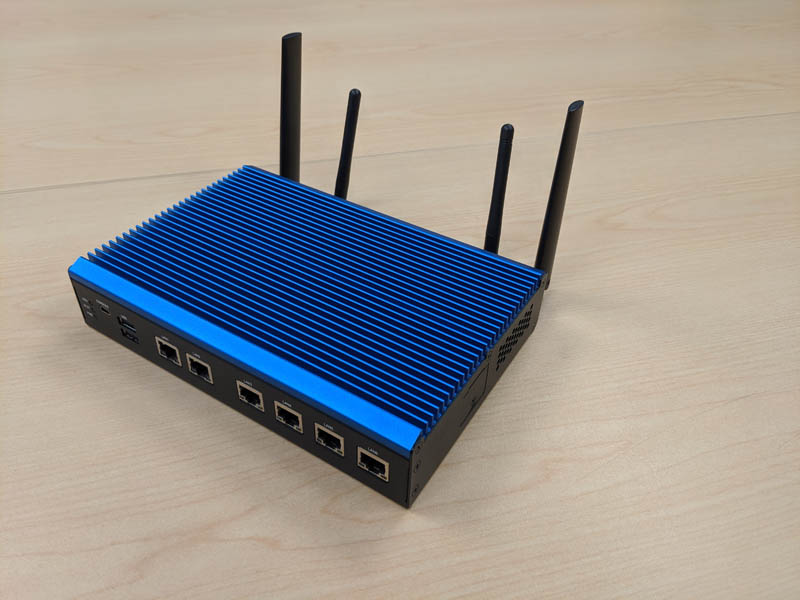
Quanta also has an enormous networking arm. The company is now using the latest Broadcom silicon to create chassis switches for upcoming 100GbE and 400GbE deployments.
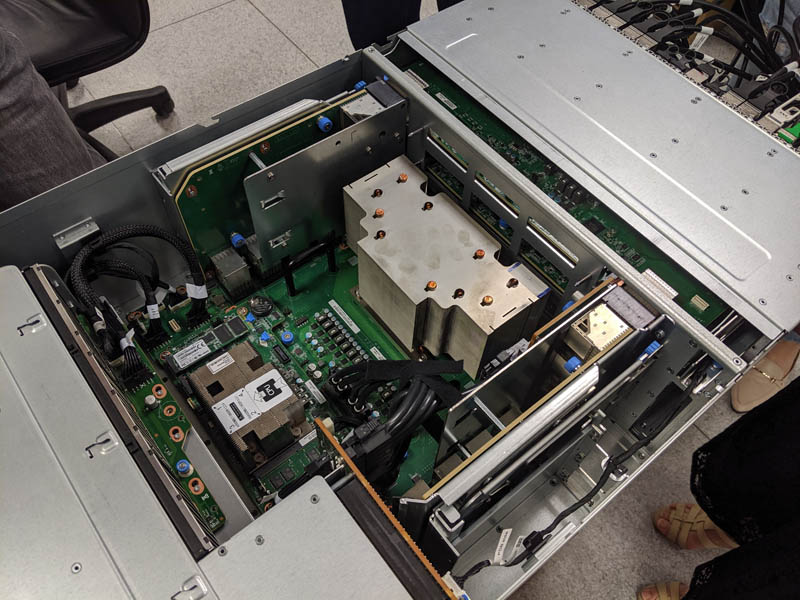
For the 5G/ Telco edge space, Quanta is getting into the market with a new Intel Xeon D-2100 series platform that can handle flexible storage, deployment, and expansion. If you want to deploy, for example, a NVIDIA Tesla T4 edge analytics platform quanta is developing solutions for you.
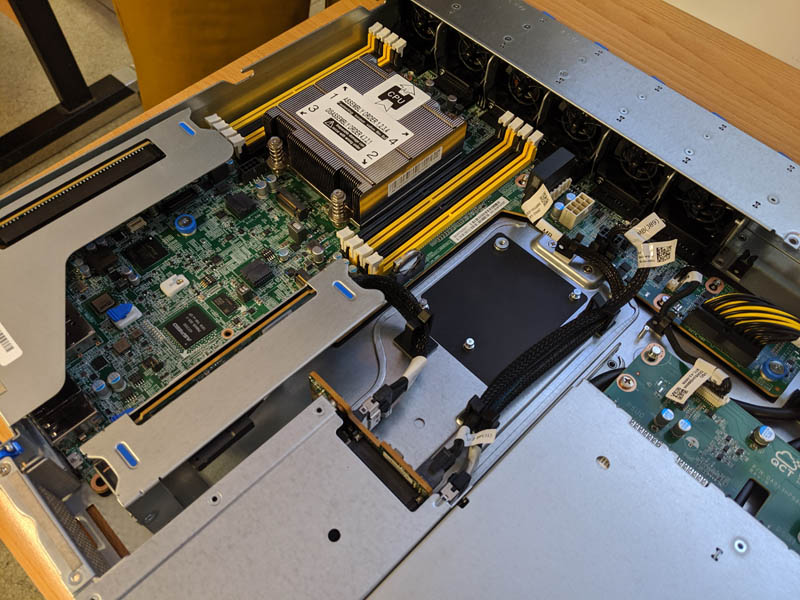
Overall, the theme was clear that the company is looking to push out from the hyper-scale data center and into the edge which will replace and expand the footprint of today’s networks.
Final Words
Overall, it is great to see Quanta join the AMD EPYC 7002 series market. Having more vendors, each providing their unique spin on systems is a big benefit to the market as a whole. This is clearly a move that is being pushed by customers who want PCIe Gen4 today, rather than in the second half of 2020.
Stay tuned to STH for more on the Quanta platforms.

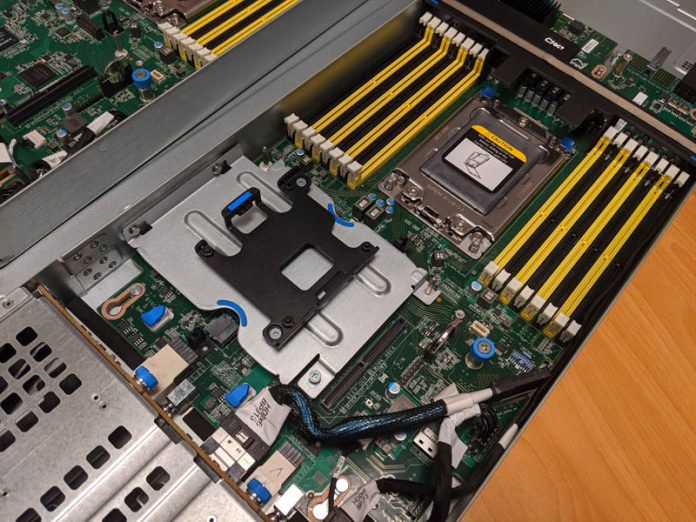



Wow! Talk about jumping into the fray loaded for bear. QCT clearly means business with their new EPYC-powered servers.
Putting 16x DIMM slots into their single-socket, multi-node systems is a huge differentiator. And I’m a big fan of OCP mezzanine slots instead of the proprietary form factor cards used by HPE, Dell, and Supermicro. That’s one detail where I think QCT, Gigabyte and Lenovo have a consistent advantage over the other folks.
Expansion on the Horizon…already started!
Great efficient description of the devices and details!
Any upcoming multi-GPU (4+) EPYC servers with PCIe 4.0 slots for GPUs?
Igor – stay tuned for this week at Supercomputing we have highlighted one already on STH weeks ago.
Thanks Patrick.
On the S43CA, I don’t understand where the PSUs and cooling fans are located. I don’t see them on the pictures and the diagram also doesn’t have them. Can you elaborate?
May I be excused a off topic comment please?
Patrick, please send off your picture with the server out in its sled, to obtain the copyright registration from the USPTO. This is a super “environmental portrait “ which any photojournalist at the highest level has ever right to be proud of. I realise that you weren’t the photographer, but the MO is to acquire the primary copyright for a nominal fee and ensure your photographer is named for moral copyright registration purposes which ensures the copyright statement below the reproduction in running magazine or newspaper articles gives his name and usually business or agency name will run on inclusive in full with the caption of your choice if you enter your description on your application form how you want to be represented when the editors call for subject shots.
Yuk I’ve concatenated myself into borderline illegibility but I think procedurally it can be followed to obtain the desired result.
Upshots include usually automatic pro rata payment from the publisher and of course automatic Langham Act entitlement to triple punitive damages for abuse in the event, which is sadly all
Sorry I let that unravel but to wrap: this is to ensure your photographer will be paid for his work and your personal image rights are established in the process as well as coming up solid in the mind of subs and editors who are looking for their goto in the industry.
Make no mistake this is a first rate calling card for your business and name to establish-cement- your voice as a recognised industry source. There aren’t any goto sources at present, the work of two decades of stifling and hugely expensive PR coincidental with the disenfranchisement of smaller operations and customers in computing ever since Byte magazine was canned. I remember walking out of the newsagents without my copy of Byte in a daze of confusion. Byte went down that suddenly. My business in advertising media had just gotten up about then. Advertising uses a fair amount of storage and storage services and transfer. This era I count on being my professional life, requires in house real expertise, as the margin crushing result.
I digress: please don’t pass your opportunity to capitalise on this picture of you. It is SUPERB. I’ve been less happy with the results from middle five figure shoot budgets. Any PJ worth their salt could write a essay on it- this is the image that you can sell books with… et.al. ad nauseam it’s good ok!
Okay I’m not talking down my own profession in case I have sounded too negative about whose work your portrait is as good as: I just have said nothing about the gear which is required to up the game here and I would start by putting my 120mm tilt shift Leica S (via adapter) on my Panasonic S1h – avoiding another essay, skills blend fast into technical ability on a par with budgets once you’re above average. I may be misremembering but I’m sure STH just acquired a Panasonic S1? This is the most striking loss leader in pro photography. I’m not sure that loss leaders really existed until this camera. But look at the whole lens and accessories game for why I confuse colleagues with my statement Panasonic is fully Jean-Louis Gassé High Right strategy, against the stills photo business and that logic explains how they can deliver such a capable professional camera undercutting bodies many times the price with unique and better features and arguably better picture quality, though look at any test footage from the AVA1 or Varicams with comparable sensors to see how high they set the bar with lesser sensors, I’m not yet getting quite the equal files, not just yet.
Photo: done.
Book: ????
Mainstream column: soon after
Forget Forrester/Ovum/Gartner:shortly thereafter.
Believe!!
“ the model shown was in STH blue/ black.”
Doesn’t this just beg a co-marketing program?
Pre-sold short runs of STH developed configurations, to meet the STH avowed intent to cater for home lab, small but serious commercial office, and educational experience programs, everyone who requires the same as the highest level but in capacities or physical format typically SOHO style, e.g. we need silence and then therefore we might happily pay for outboard DC supplies and DC inputs possibly front of rack (cooling is likely a differentiation that STH products need to meet) with turnaround and delivery time scale roughly equivalent to the quote process of VARs.
This would make STH my company’s top tier vendor across the board. And gain referrals we have by policy not given in two decades, even when we were accredited and able to sell two of the then five tier one names.
Advertising startup shops are not far from being low budget HFT outfits, recently, as the arena convergence makes vanilla HFT essentially entry level in brokerage and advertising spot trading accelerates due to GitHub / maturing cloud computing effects empowering small development teams, so advertising sellers are increasingly capable of quant shop action.